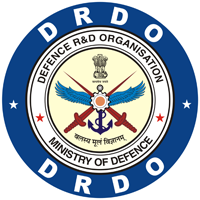Variability of Hydrographic Properties in the Alleppey Terrace Region: Insights from July 2023 Observations
DOI:
https://doi.org/10.14429/dsj.21349Keywords:
Alleppey terrace, Coastal currents, Southwest monsoon, Upwelling, EddiesAbstract
This study examines how ocean conditions change during the peak summer monsoon in the South Eastern Arabian Sea (SEAS), particularly around the Alleppey Terrace (AT). To understand these variations, we conducted detailed field observations along seven transects at 15 Nm intervals in the AT region. The results show that the AT’s underwater topography plays a crucial role in shaping coastal upwelling, eddy movements, and ocean circulation. Upwelled waters extend offshore approximately 160 km in the southern part, 50 km near the AT region, and up to 100 km further north. Cyclonic eddies dominate the southern part of the AT and the continental slope region, while anticyclonic eddies prevail in the western side of the AT and the extended shelf region of the AT. Undercurrents were commonly observed between 100-130 m, with shallower undercurrents (~30 m) in the northern transect near the coast. Poleward undercurrents exhibited maximum velocity in the southern transect, flowing along the continental slope region. Data from Acoustic Doppler Current Profilers (ADCP) provide valuable insights into circulation patterns and their influence on thermo-haline and biogeochemical properties. Chlorophyll distributions highlight strong coastal upwelling, with peak concentrations varying by depth and eddy activity. These findings enhance understanding of SEAS dynamics during the monsoon period, contributing valuable insights into coastal upwelling, eddy formation, and biogeochemical interactions.
Downloads
Published
How to Cite
Issue
Section
License
Copyright (c) 2025 Defence Scientific Information & Documentation Centre (DESIDOC)  Where otherwise noted, the Articles on this site are licensed under Creative Commons License: CC Attribution-Noncommercial-No Derivative Works 2.5 India
Where otherwise noted, the Articles on this site are licensed under Creative Commons License: CC Attribution-Noncommercial-No Derivative Works 2.5 India

